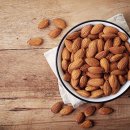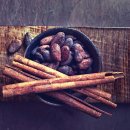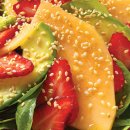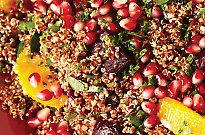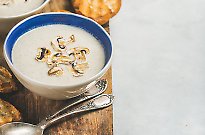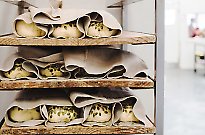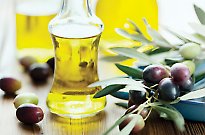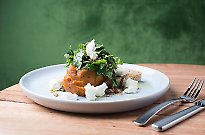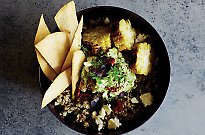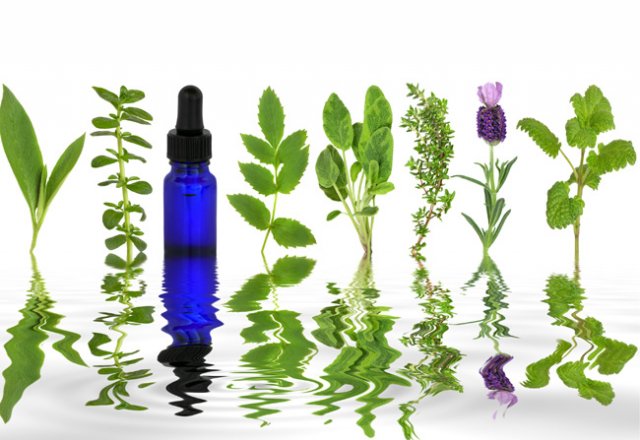
Australian bush medicine
Australian bush medicine

Modern Australia has been blessed with a plethora of food and medicines at our fingertips, which has, for better or worse, left the Australian bush a largely untapped pantry of possibilities.
For white people at least. Indigenous Australians have long used the plants – fruits, seeds, leaves and flowers – for food and health.
“Most Australians have never even tasted bush foods, yet the variety and quality of culinary experience they offer is enormous,” says Jennifer Isaacs, an expert in Aboriginal culture and author of the landmark Bush Food – Aboriginal Food and Herbal Medicine.
“Most 19th century colonists looked with horror at the eating habits of Aborigines, and had little insight into the depth of knowledge and experience of their hosts. Tentatively they sometimes tried foods they observed ‘the blacks’ eating, but just as often they looked for herbs and botanical equivalents of plants of the old country and experimented with ‘damson jam’ or intoxicating drink made from local bushes that looked like hops.”
As you can expect, such misguided efforts met with mixed results. Today, though, environmental scientists are attempting to uncover what has remained hidden for so long. And there’s plenty of it. Australia is believed to possess the highest number of flowering plants in the world.
The medical fraternity, arguably a little late on the scene, are finally starting to catch on also, and what they have found has been, in some instances, remarkable.
Bush healing
Lemon myrtle
It’s the plant that’s more lemony than lemon and just as versatile. In fact, lemon myrtle (Backhousia citriodora) has the highest concentration of citral in the world – the substance that gives lemon and lemongrass its distinctive scent – with a massive 95 per cent concentration compared to only 10 per cent for standard lemon oil.
Studies conducted by Charles Sturt University found that lemon myrtle has distinctive antibacterial, anti-viral and antifungal properties.
The leaves can be used fresh, dried, ground or – like traditional lemon – as an oil. Traditionally, it has been drunk as a tea and used as a cleansing ‘soap’. It’s also good for digestive problems and nausea – including travel sickness – and has a calming effect on the emotions.
Eucalyptus
Perhaps the most well known bush remedy of all, eucalyptus oil can be inhaled for respiratory problems, throat and viral infections as well as for the common cold. Indigenous Australians used the gum itself to treat toothache and drunk it with water to treat diarrhoea. A similar mix can also be applied to the skin as a disinfectant.
Although numerous eucalypt species can be used to extract the powerful oil, it is the oil from the peppermint gum (Eucalyptus dives) which has been scientifically proven to be the most effective for clearing sinus and catarrh.
Jelly bush honey
Derived from the Leptospermum polygalifolium, a similar species to that of New Zealand’s manuka, jelly bush honey is so thick it is very difficult to remove from the tree and, consequently, for a long time, nobody wanted it. But with the discovery of its medicinal properties, jelly bush honey has become a precious item, to the point where it has now been registered as a drug – the first time any honey has received such an official recognition in the world.
Jelly bush honey contains powerful antibacterial properties, proven to be a great success in treating minor to severe burns. The honey is usually applied directly and undiluted to the wound and then covered with a bandage. This ‘honey dressing’ works on the wound in several ways – drying the affected area, fighting infection, reducing inflammation, minimising scarring and stimulating new skin growth.
One of the most exciting developments has been the honey’s ability to kill antibiotic-resistant bacteria such as the notorious golden staph, rampant in hospitals around the world.
Bush plum
The bush plum – also referred to as the Kakadu plum or Billygoat plum (Terminalia ferdinandiana) – is a super-powerful antioxidant. In fact, it’s the world’s highest source of vitamin C, with more than six times more than oranges.
The tart fruit can be eaten raw or made into a jam or sauce. It has even been included in antioxidant supplements and fortified beverages as well as skin care cosmetics.
Bush flowers
In the last 30 years, fifth generation Australian herbalist Ian White has developed the Bush Flower Essences. Employing a similar principle to English physician Dr Edward Bach (who developed the 38 Bach flower remedies), White immersed flowers in water and then diluted the concentrated solution for a variety of medicinal uses. These 69 remedies are now used by naturopaths and homoeopaths around the world.
Tea tree
The humble tea tree oil has some unique properties. Although considered toxic to drink, it can be used on the skin and hair in a number of interesting ways. For wounds and skin infections, it kills harmful bacteria without damaging healthy organisms, by dissolving the lumps of white blood cells that make pus. In this way it has proved extremely useful as a topical application for ulcers, boils, tinea, insect bites, sunburn and head lice. Soap made from the oil can be used as an effective treatment for acne.
The most common tea tree oil comes from the Melaleuca alternifolia, but there are well over 100 different melaleucas (some yet to be fully researched) including Melaleuca quinquenervia, or nerolina. Nerolina works as an adrenal tonic and can be used as an inhalation with boiling water – as you would with Vicks VapoRub – to relieve symptoms of bronchitis or asthma.
Kunzea
A recent addition to the essential bush oil cabinet, Kunzea ambigua (or poverty bush, as it is sometimes unflatteringly called) has been used externally to soothe muscle pain and appears to be particularly beneficial for soft tissue injuries and the joint pain associated with arthritis. Just add a few drops of the potent oil to a good massage carrier oil (like jojoba oil) and rub it into the affected area.
WA Sandalwood
At one time, WA Sandalwood (Santalum spicatum) contributed to more than half of WA’s revenue until widespread land clearing almost wiped it out altogether. Today, it’s having a massive resurgence, with over 2000 tonnes of the valuable oil exported to Asia every year. Government-funded research has put both the wood and nut of the plant under the microscope and boosted its medicinal profile in the process.
Inhaling the oil has been found to have a tangible calming effect on the body, notably by lowering systolic blood pressure, and has recognised antimicrobial properties.
Medical research
It was only a matter of time before bush remedies were identified, isolated and squeezed into pharmaceutical products. In fact, the pharmaceutical use of Australian plants has been steadily growing with little fanfare for quite some time.
The Australian rainforest tree, corkwood, for instance, supplies almost half the world with hyoscine, a phytochemical used for motion sickness and to relieve the side effects of cancer treatment. Its exportation hasn’t abated since its demand for shell shock during World War II.
Kangaroo apples are a crucial source of steroidal saponins, which are included in the modern contraceptive pill and steroidal treatments for asthma, infertility, impotence, arthritis and allergies.
More recently, there has been considerable excitement surrounding the medicinal possibilities of the Moreton Bay chestnut, which contain castanospermine, an alkaloid that may provide a possible treatment for cancer and HIV. Studies conducted in the US found that the substance could stop the metabolism of cancer cells when combined with AZT – a drug commonly used for HIV – and may in future form part of a multi-drug attack on the condition.
Closer to home, Dr Russell Barrow, from the Australian National University, has undertaken extensive research on the existence of naturally occurring antibiotics found in the fungi grown on Australian plants and on kangaroo and wombat dung. He identified 10 chemicals that can neutralise viruses that are usually resistant to other orthodox antibiotics.
Then there’s the vicious cone shell of the Great Barrier Reef. Deadly to most of us, but not scientists at Brisbane-based Xenome, who found the coneshell venom contained an active compound called chi-conotoxin that, when manipulated, could be more effective – and considerably more powerful – than morphine in soothing post-surgery pain.

